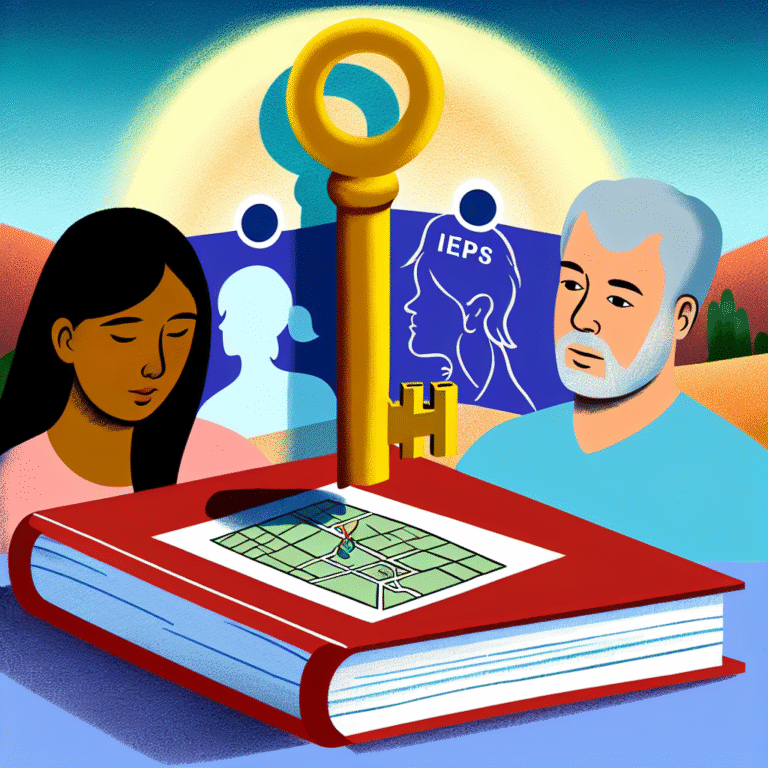
Unlocking Potential: A Parent’s Guide to Navigating IEPs for School Success
Introduction: The Journey to Unlocking Potential
Navigating the education system for a child with special needs can often feel like traversing a complex maze. The Individualized Education Program (IEP) is a vital resource for advocating for your child’s unique educational needs, but understanding it can be daunting. That’s where Unlocking Potential: A Parent’s Guide to Navigating IEPs for School Success comes into play. In this guide, we’ll explore the intricacies of IEPs and how they can become powerful tools to unlock your child’s potential.
Understanding IEPs: The Foundation of Education Support
What is an IEP?
An Individualized Education Program (IEP) is a legally binding document that outlines special education services tailored to a child’s individual needs. Created for students who qualify under the Individuals with Disabilities Education Act (IDEA), an IEP includes specific goals, accommodations, and methods of assessment to help the child thrive in a school environment.
Who Needs an IEP?
Not every child requires an IEP. These programs are appropriate for students with conditions such as autism, ADHD, dyslexia, and other learning disabilities. Eligibility is determined through a comprehensive evaluation involving educational professionals, parents, and other specialists. Understanding whether your child qualifies is the first step in this journey of Unlocking Potential: A Parent’s Guide to Navigating IEPs for School Success.
The IEP Process: A Step-by-Step Guide
Step 1: Evaluation
The IEP process starts with an evaluation to determine your child’s eligibility. This assessment typically involves various tests, observations, and input from teachers and specialists. Families should be actively involved, ensuring that the evaluation is thorough and accurate.
Case Study: Maria’s Journey
Maria, a third grader, was struggling with reading comprehension. After attending a workshop for parents, her mother became equipped to request a school evaluation. The evaluation revealed Maria’s dyslexia, leading to the creation of an IEP that included specialized reading instruction and additional time for tests.
Step 2: IEP Meeting
Once eligibility is established, the next step is the IEP meeting. This meeting brings together parents, teachers, and specialists to discuss your child’s needs and develop the actual IEP document. It’s crucial for parents to prepare and understand their rights during this meeting.
Step 3: Implementation
After the IEP is signed, it’s time for implementation. This phase involves your child receiving the support and services outlined in the IEP. It’s essential to keep communication open between home and school to monitor progress.
Step 4: Review and Update
The IEP is not static; it must be reviewed at least once a year. Progress reports should be shared regularly, allowing parents to see if modifications are needed.
Key Components of an IEP
Present Levels of Performance (PLP)
This section details how your child is currently performing academically and behaviorally, serving as a baseline for setting goals.
Goals and Objectives
Specific, measurable goals are created for each subject area. These should align with state educational standards, providing direction for both the child and educators.
Accommodations and Modifications
This includes changes to the curriculum or instructional methods that support the child’s learning. For instance, a child with dyslexia might be provided with audiobooks.
Transition Planning
For older students, the IEP should also focus on transition planning, preparing them for life after high school.
Effective Parental Advocacy in the IEP Process
Building Relationships with Educators
Successful IEP navigation depends heavily on positive relationships with teachers and administrative staff. Open dialogue fosters understanding and cooperation.
Understanding Your Rights
Under IDEA, parents have specific rights that ensure their child’s educational needs are met. Familiarize yourself with these rights to advocate effectively.
Utilizing Resources
Being informed is crucial to success. Organizations like the Parent Training and Information Center (PTI) can offer valuable resources and support.
Real-World Applications: Successful IEP Stories
Case Study: Jake’s Acoustic Learning
Jake, a high school student with auditory processing disorder, received an IEP that incorporated assistive technology, including sound amplification devices. With these accommodations, Jake began to thrive academically, leading to him achieving higher grades and improved self-esteem. Analysis: By embracing technology, Jake overcame barriers and unlocked his academic potential.
Case Study: The Twins
Two twins, Alex and Sam, both on the autism spectrum, received different IEPs reflecting their unique challenges. While Alex excelled in structured environments, Sam thrived with hands-on learning. Their parents, committed to individualized support, worked closely with educators to ensure both boys received what they needed to flourish. Analysis: This story demonstrates the importance of tailored IEPs that cater to each child’s unique strengths.
Charts and Tables: Navigating the IEP Process
| IEP Process Steps | Description |
|---|---|
| Evaluation | Assess child’s needs; gather data. |
| IEP Meeting | Discuss IEP goals and services with team. |
| Implementation | Carry out the IEP in the school setting. |
| Review and Update | Regularly assess and revise the IEP as needed. |
Navigating Challenges: FAQ Section
1. What if I disagree with the school’s evaluation?
If you disagree, request an independent educational evaluation at the school’s expense. Knowing your rights is key.
2. Can I request changes to the IEP?
Absolutely. Parents can propose changes at any time to better suit their child’s evolving needs.
3. How do I track my child’s progress?
Request regular updates from teachers. Keeping a communication log can help you stay informed and proactive.
4. What if my child is not making progress?
If progress is lacking, discuss concerns with educators. The IEP can be adjusted to provide additional support.
5. Can a child with an IEP attend college?
Yes! Many students with IEPs successfully transition to college. It’s essential to plan during high school and use appropriate support services.
Conclusion: Empowering Your Child’s Future
Unlocking Potential: A Parent’s Guide to Navigating IEPs for School Success is about empowerment. By understanding the IEP process, actively participating in meetings, advocating for your child’s rights, and using available resources, you can navigate the complexities of special education with confidence. Every step taken is a stride toward unlocking a brighter, more successful future for your child.
As you venture further along this path, remember that your involvement makes a difference. Stay curious, stay informed, and, above all, stay committed to your child’s journey. The potential to succeed lies within reach—let’s unlock it together!








